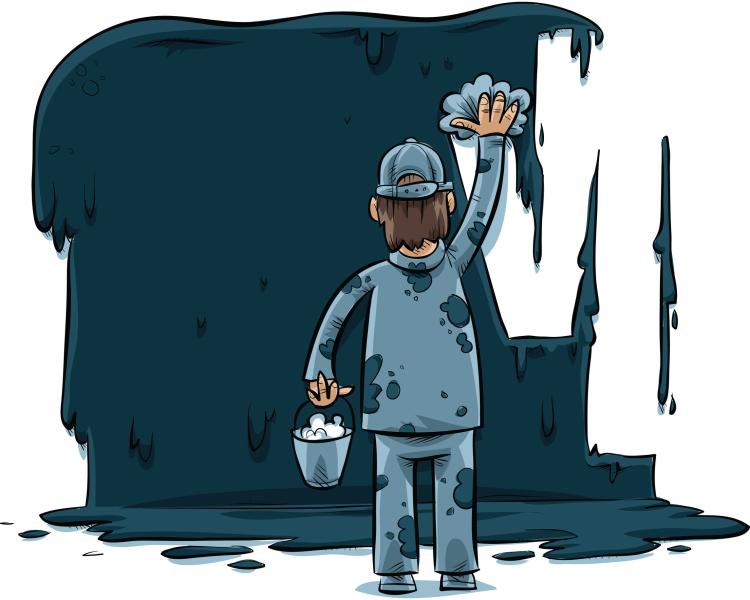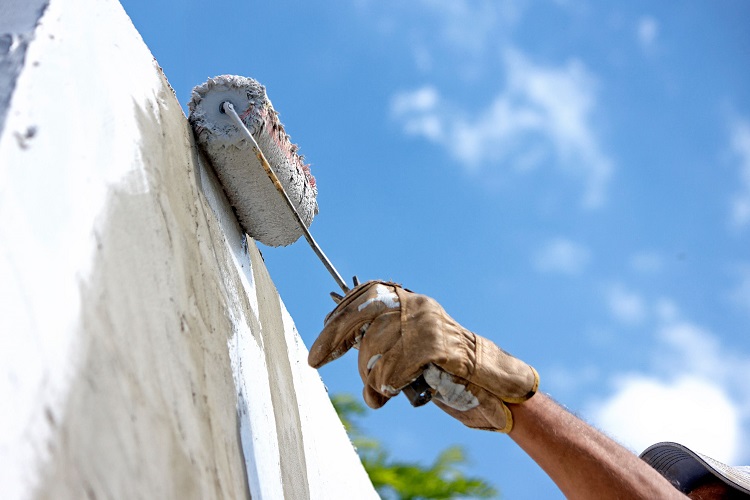10 Ways You Can Protect Your Exterior Paintwork And Transform Your Home

When it comes to paintwork in general, it is often said that the quality of the paint, the painter and the quality of work will determine the longevity of the finish - but that isn’t necessarily so. There are many things you can do to help improve your exterior painting work, as well as help keep the fresh paint look for longer. Take a look at these top 10 ways you can improve your paintwork and protect it over time.
1) Ensure That Exterior Surfaces Are Fully Prepared Before Painting
In many cases, people overlook the inspection process when it comes to painting the exterior of a house. For many, the easiest thing to do is to paint over the base paintwork and little cracks and surfaces that have built up over time, but overlooking these small issues may turn into something bigger in the future.
2) Check The Exterior Walls And Surfaces For Signs Of Weather Damage
If you see any crumbling of paint or brickwork, water damage or other weathering effects on your property, then put the paintbrush down. Taking care of your brick and mortar, woodwork and metal work will pay off later down the line as you can be sure that your paintwork will not suffer from damage coming from beneath the paint surface itself.
3) Prep The Surface Walls Before Painting With High Quality Tools And Equipment

It really pays off to use the right tools for the job, so don’t cheap-out on using incorrect or inferior tools when it comes to preparing the surfaces before painting. If you cannot afford to purchase the equipment used for sanding and prepping the wall surfaces, there are many local professionals as well as hire plans to use to get the right tools for a great price.
4) Apply a High Quality Primer before Applying the Main Coat
As with the tools and equipment, there is no use in using an inferior quality primer paint to use underneath a high quality surface paint, only to see it look rough over time. Use high quality professional grade primer paint that is matched to the type of surface you are painting. Oil-based paints are widely used by the professionals on external walls, and can be found in nearly all house and garden type stores.
5) Use a Range Of Waterproofing Solutions To Suit Your Property Best
Does your house feature brick and mortar? Metal? Wood? Then check to make sure that you are taking all of the correct precautions when it comes to helping out with waterproofing. By ensuring that all of your surfaces are able to withstand the elements, you will reduce the risk of rot, crumbling, and cracking on multiple surfaces when the weather changes from hot to cold.
6) Remove Nails Screws and Other Oxidising Metals from the Surface
Nails, screws and other types of metal used in attaching satellite cables, fence posts and other adornments can often ruin the finished paintwork of a house in a short period of time due to rusting. Not only does the affected area turn a nasty shade of brown, weathering effects such as rain mean that you will quickly see brown streaks running down your house. Nasty!
7) Choose a Cooler Time of Day to Paint Your House

It may seem a novel tip, but it actually works! When you paint during the day, the sunshine will affect the drying time of your paint. When the sun is really shining you will leave unsightly brush lines and paint marks behind as the sun and heat dries the paint as you are still painting it. Choose a cooler time of the day and allow the paint to stay wetter that little bit longer to give you a nice even finish.
It may seem a novel tip, but it actually works! When you paint during the day, the sunshine will affect the drying time of your paint. When the sun is really shining you will leave unsightly brush lines and paint marks behind as the sun and heat dries the paint as you are still painting it. Choose a cooler time of the day and allow the paint to stay wetter that little bit longer to give you a nice even finish.
8) Layer, Layer, And Layer Some More!
Whilst too many layers of the wrong type of paint can give a very bad look to your home, choosing to add multiple layers of paint to certain finishes can help even up the tone and freshness of your painted surfaces. Different materials hold paint in different ways, so if you want that even look across wood, metal and plastic, you need to add more layers to hide a construction materials personal reflection and absorption properties.
9) Inspect Your Paint After Initial Application
Whilst the initial inspection of your property will save you a bundle in later costs if you ever paint over cracks or mildew, ensuring that you inspect your paintwork after you have painted it, you will see how well it has adhered to a given surface and be able to tell if there may be any future problems with cracking or crumbling. Let each layer dry and inspect before applying a new layer to ensure optimum exterior painting finishes every time.
10) Choose A Colour Scheme That Reflects The Character Of Your Home

Whilst choosing the colour to paint your house may seem like the first thing you actually do, have a little look around your neighbourhood and get a good idea of how similar houses fit in with their colour schemes. Choose a colour that reflects the character of your house, and allows you to fully enjoy your property when it looks it's very best - and possibly improving its resale value!
Finally, you can always consult an expert exterior painting service in your area. With their years of experience they will be able to help you, from choosing the right colour scheme to using the proper technique that will increase the longevity of your exterior paint.

